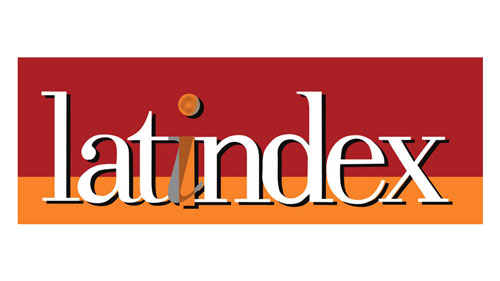Lutas da fênix e da murta: estratégias e desafios na preservação das línguas cherokee e guarani
DOI:
https://doi.org/10.26512/rhla.v22i2.46989Palabras clave:
Cherokee, Guarani, Vitalidade, Substituição linguística, DiversidadeResumen
Este artigo explora o papel da escrita para a preservação de línguas orais a partir da história da criação do silabário cherokee por Sequoyah. Baseado no relato sobre a recepção do silabário pelos membros da Nação Cherokee, trabalha o conceito de blasfêmia proposto por Bhabha (1998), a fim de investigar a ambiguidade da aplicação da tecnologia da escrita para o povo cherokee. No segundo momento, três artigos são apresentados e colocados em diálogo. O artigo de Guyette (1981) analisa a vitalidade da língua cherokee por meio da análise dos locais e situações em que a língua é utilizada por três comunidades cherokee; Velasquez (2021) escreve acerca da educação bilíngue dos Guarani do Paraná; e Peter (2007) analisa a experiência de uma escola de imersão em cherokee para crianças como uma das iniciativas de reversão da substituição linguística. Conclui-se, em diálogo com Bastardas-Bodas (2012), que a diversidade linguística deve ser protegida e encorajada, principalmente frente aos riscos impostos por línguas do comércio internacional como o inglês. Compreende-se que a diversidade linguística forma uma robusta ecologia simbólica das formas de viver e pensar.
Descargas
Citas
ANZALDÚA, G. Como domar uma língua selvagem. Cadernos de Letras da UFF – Dossiê: Difusão da Língua Portuguesa, n. 39, p. 297-309, 2009.
BASTARDAS-BOADA, A. Language and identity policies in the “glocal” age: new processes, effects and principles of organization. Generalitat de Catalunya, Barcelona: Institut d’Estudis Autonòmics, 2012.
BHABHA, Homi. K. Como o novo entra no mundo: o espaço pós-moderno, os tempos pós-coloniais e as provações da tradução cultural. In: ______. O local da cultura. Tradução de Myriam Avila, Eliane Livia Reis e Glauce Gonçalves. Belo Horizonte: Editora UFMG, 1998. p. 292-325.
BROWN, M. Sequoyah. The Georgia Review, Athens, v. 1, n. 4, p. 490-499, 1947. Disponível em: http://www.jstor.org/stable/41397575. Acesso em: 07 jul. 2022.
CASTRO, E. V. de. O mármore e a murta: sobre a inconstância da alma selvagem. Revista de Antropologia, São Paulo, USP, v. 35, p. 21-74, 1992.
DWYER, A. M. Tools and techniques for endangered-language assessment and revitalization. Vitality and Viability of Minority Languages, New York: Trace Foundation Lecture Series Proceedings. Preprint. Online, p. 23-24, Oct. 2009. Disponível em: https://kuscholarworks.ku.edu/bitstream/handle/1808/7109/Dwyer2011_AssessRevitalize.pdf%3Bjsessionid=627FA45E0962C1048D37967AAAAA5477?sequence=1. Acesso em: 10 jul. 2022.
FISHMAN, J. A. Reversing Language Shift: theoretical and empirical Foundations of Assistance to threatened languages. Clevedon, UK: Multilingual Matters Limited, 1991.
GOODY, J. The power of the written tradition. Washington, DC: Smithsonian Institute, 2000.
GULDIN, R. From spatial metaphors of translation to translation as a spatial metaphor. In: _____. Translation as Metaphor. New York: Routledge, 2016. p. 46-68.
GUYETTE, S. An examination of cherokee language vitality. Anthropological Linguistics, Bloomington, v. 23, n. 5, p. 215-225, 1981. Disponível em: http://www.jstor.org/stable/30027860. Acesso em: 09 jul. 2022.
hooks, b. A língua: ensinando novos mundos/novas palavras. In: _____. Ensinando a transgredir. Tradução de Marcelo Brandão Cipolla. São Paulo: Martins Fontes, 2017. p. 223-33.
KRAUSS, M. Status of native American language endangerment. In: CANTONI, G. Stabilizing Indigenous Languages. Flagstaff: Northern Arizona University; Center for Excellence in Education, 1996. p. 16-21.
LEWIS, M. P. Towards a categorization of some of the world’s endangered languages. SIL International, 2005. Disponível em: https://www.sil.org/system/files/reapdata/11/06/66/110666044150280343746982864318875338806/silewp2006_002.pdf. Acesso em: 10 jul. 2022.
PETER, L. “Our beloved cherokee”: a naturalistic study of cherokee preschool language immersion. Anthropology & Education Quarterly, v. 38, n. 4, p. 323-342, 2007. Disponível em: http://www.jstor.org/stable/25166634. Acesso em: 10 jul. 2022.
SOUZA, T. C. C. de. Língua nacional e materialidade discursiva: a influência do tupi. In: MELLO, H. et. Al. (Org.). Os contatos linguísticos no Brasil. Belo Horizonte: Editora UFMG, 2011. p. 241-254.
VELASQUEZ, P. P. O ensino de língua guarani e portuguesa em comunidades indígenas do Paraná. RELVA, v. 8, n. 1, p. 55-70, jan./jun. 2021. Disponível em: https://periodicos.unemat.br/index.php/relva/article/view/5721/4302. Acesso em: 08 jul. 2022.
Descargas
Publicado
Cómo citar
Número
Sección
Licencia
Derechos de autor 2023 Revista Horizontes de Linguistica Aplicada

Esta obra está bajo una licencia internacional Creative Commons Atribución-NoComercial-SinDerivadas 4.0.
Los artículos publicados por la Revista Horizontes de Linguística Aplicada están licenciados bajo una Licencia Creative Commons Atribución-NoComercial-SinDerivadas 4.0 Internacional.
Al publicar en Horizontes de Linguística Aplicada, los autores aceptan la transferencia de los derechos de autor patrimoniales a la revista. Los autores mantienen sus derechos morales, incluido el reconocimiento de la autoría.
Autores y lectores son libres de:
Compartir — copiar y redistribuir el material en cualquier medio o formato
Bajo los siguientes términos:
- Atribución — Usted debe dar crédito de manera adecuada , brindar un enlace a la licencia, e indicar si se han realizado cambios . Puede hacerlo en cualquier forma razonable, pero no de forma tal que sugiera que usted o su uso tienen el apoyo de la licenciante.
- NoComercial — Usted no puede hacer uso del material con propósitos comerciales .
- SinDerivadas — Si remezcla, transforma o crea a partir del material, no podrá distribuir el material modificado.
- No hay restricciones adicionales — No puede aplicar términos legales ni medidas tecnológicas que restrinjan legalmente a otras a hacer cualquier uso permitido por la licencia.





